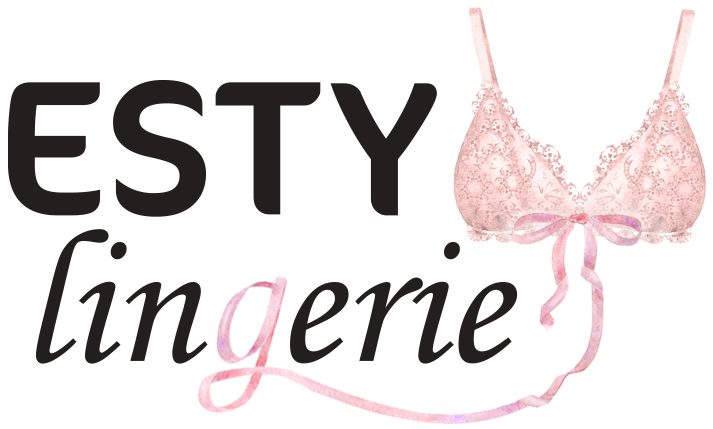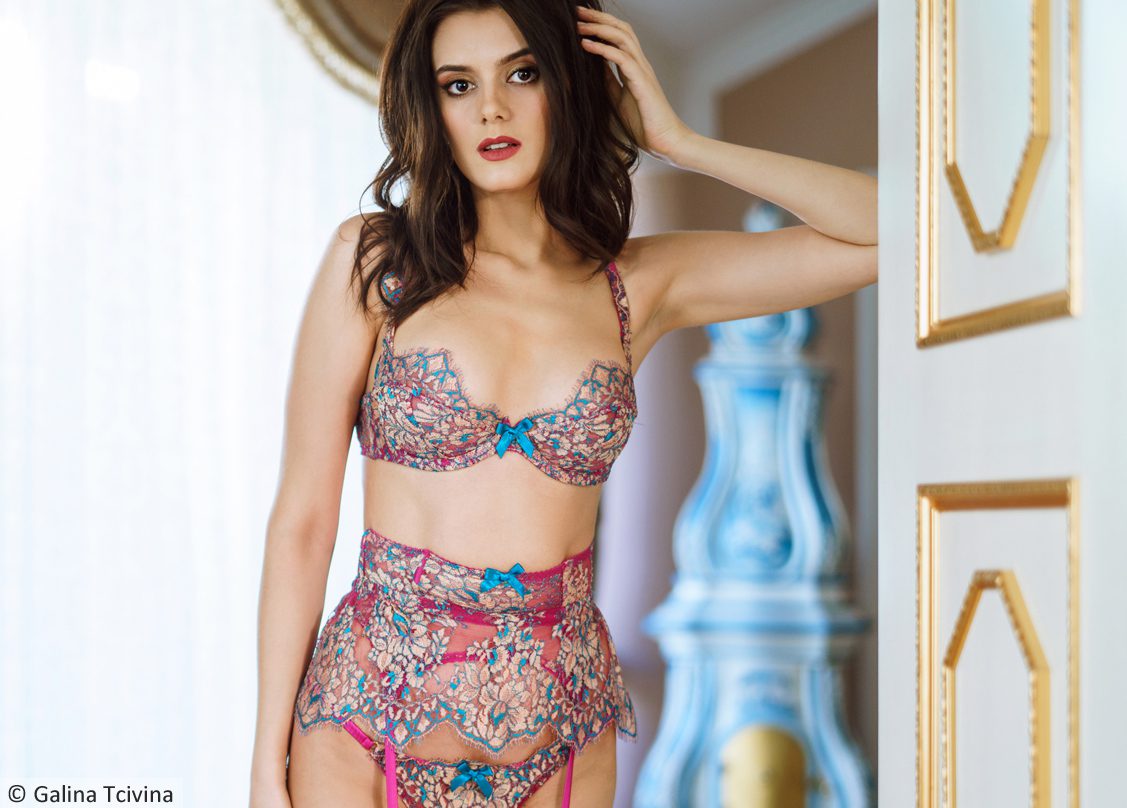Disclosure: Links with a * are affiliate links.
Happy International Lace Day! A great way to celebrate is probably to set things straight on some common lace-related lingerie beliefs and concepts, don’t you think?
When talking about lingerie with many different people, I realised that there are many misconceptions about the fabrics and materials used in the making of these garments. One of the things I have heard regularly is that lace is itchy and meant only for the bedroom. Another is the confusion between embroidery and lace. Or more so, people calling lingerie embroidery “lace” indiscriminately.
Let’s clarify some of these concepts, and discuss why such ideas may have come about in the first place. Ready?
What is lace? A quick definition
According to Google, lace is “a fine open fabric of cotton or silk, made by looping, twisting, or knitting thread in patterns and used especially for trimming garments“. If you don’t know what lace is, this definition isn’t going to help with visualisation, I believe, but it’s a start. Lace is flat, has a repetitive pattern, and is open (in comparison to fabric with tighter weave) which gives transparency to a garment.
Lace comes in all levels of quality and intricacy. We often see floral lace; it is the most common in my experience, but can feel a bit redundant for some of us. However, there exists a multitude of patterns available, from geometric, to bows, to animal print, even to some featuring little animals etc.
Additionally, despite Google’s definition, cotton and silk laces aren’t the most common you’ll find on the market. Most modern lace is made of a synthetic fibre such as polyester or polyamide/nylon.
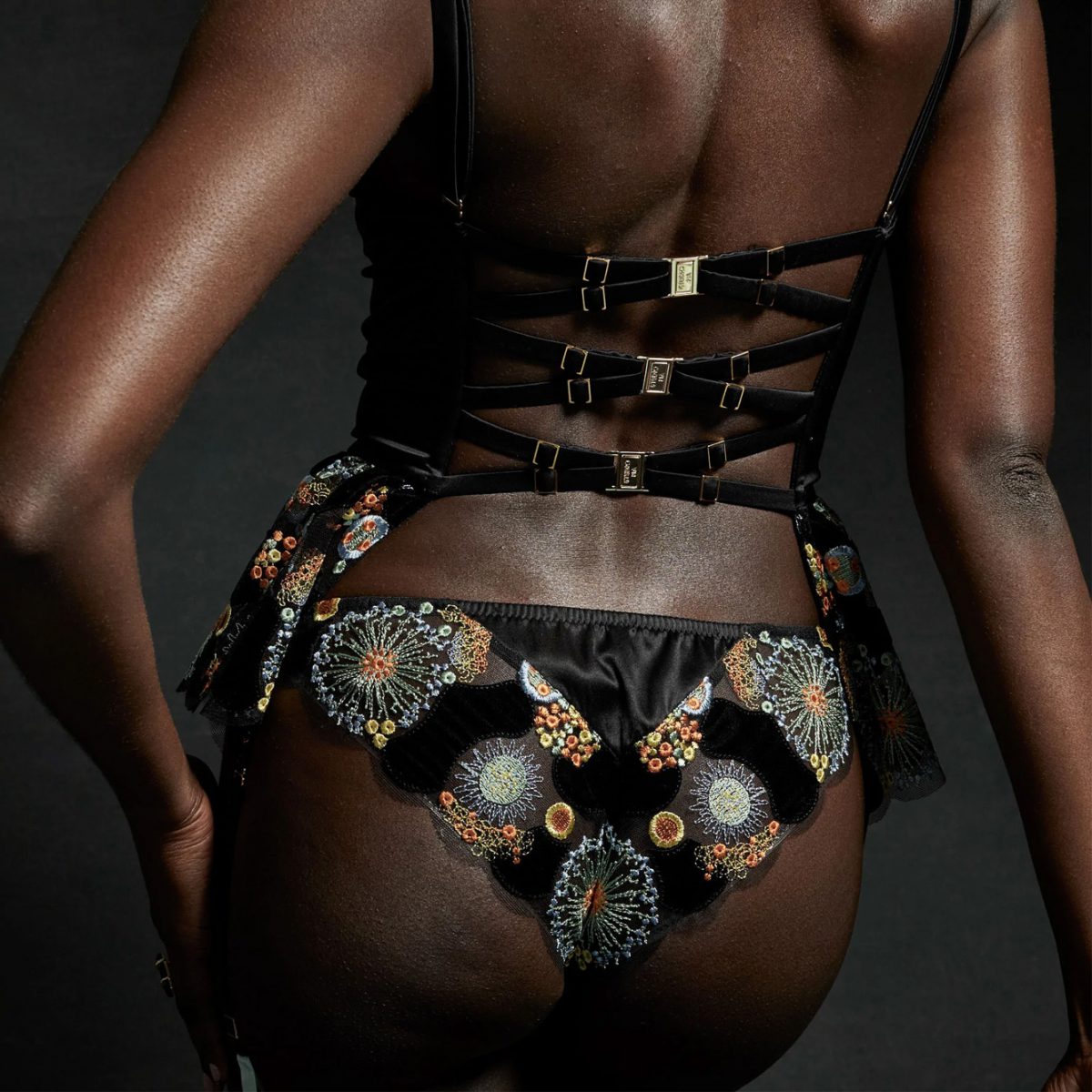
Studio Pia Zaida basque, £750 (~$837 / ~858€) and knicker, £155 (~$173 / ~177€)
Lace vs. embroidery – what’s the difference?
These days, you can easily buy a kit to learn how to do simple embroidery on your clothes and create cute little illustrations, but it would be much more difficult for you to weave lace by yourself if you tried. Lace-making builds up the entire fabric from scratch out of threads alone.
Embroidery on the other hand is a pattern added to a piece of existing fabric (think about embroidering a logo onto a t-shirt, for example). The untrained eye can get confused when embroidery is applied to sheer tulle, but if you look closely, you’ll notice that the embroidery is a layer on top of an existing ‘canvas’. Some fabrics sold simply as lace are actually embroidery on top of lace, meant to have more interesting patterns without going through the traditional, more skillful lace-making techniques.
What are the other differences? Embroidery can be a lot more colorful than lace. In fact, most lace is monochromatic, unless it has some metallic threads (though occasionally you’ll find bi-colour lace). The possibility to easily mix lots of colours in embroidery means it can look more intricate, and it also has a more raised texture than lace, which is flat. But while embroidery can be more vibrant and texturised, lace can be a bit more discreet under clothes.
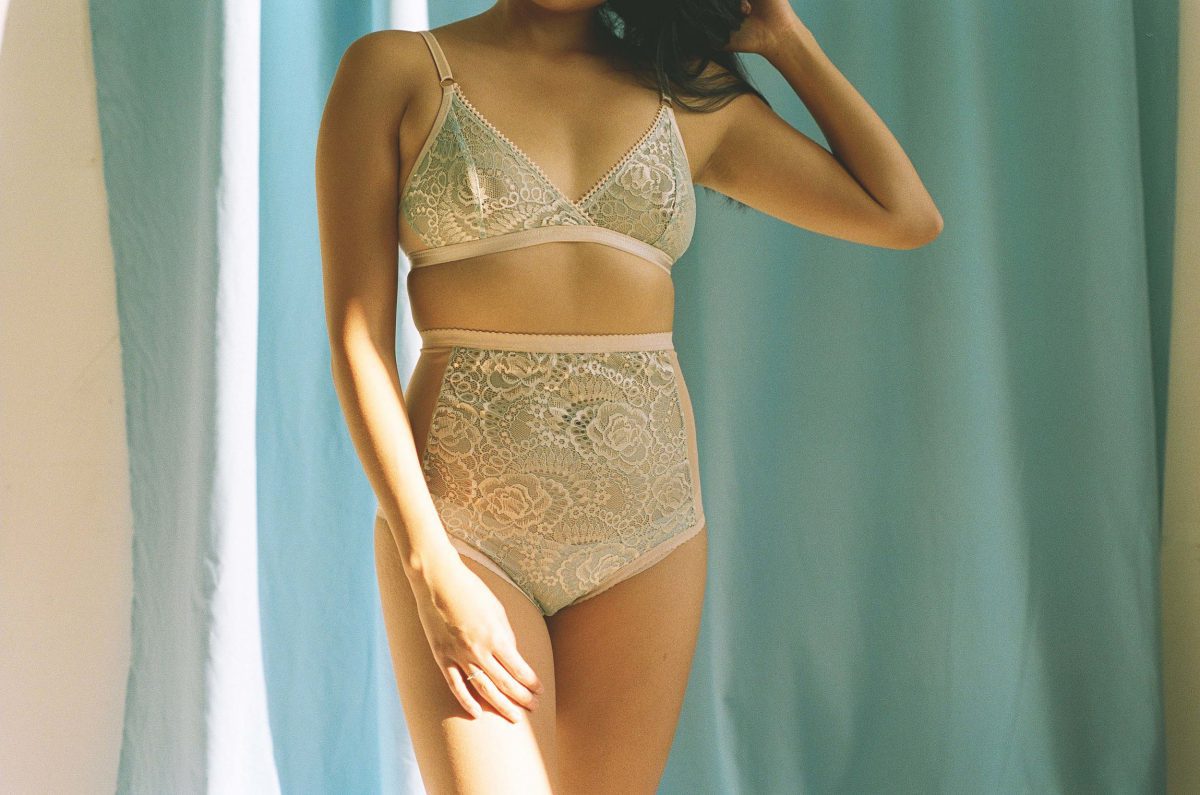
Is lace lingerie scratchy?
The idea that lace lingerie is itchy and uncomfortable comes from the fact that the lace we find in big quantities on the market today is often made of plastic and of cheap quality. Originally, lace was made of natural fibres and was very delicate and expensive to create. Although even fancier laces nowadays are often synthetic, it is still very possible to find good quality lace with beautiful craftsmanship and a soft hand. However, the price is significantly different to what is widely available in fast fashion.
It’s also a question of attention to detail. While both lace and embroidery can sometimes be a little bit rough (for example, ones made with metallic or glittery threads), good-quality brands will add a layer of soft tulle in between such lace and the skin of the customer. This both adds to the comfort of the piece and reinforces it. However, cheaper brands wanting a similar look at a lower cost will almost definitely skip this extra step!
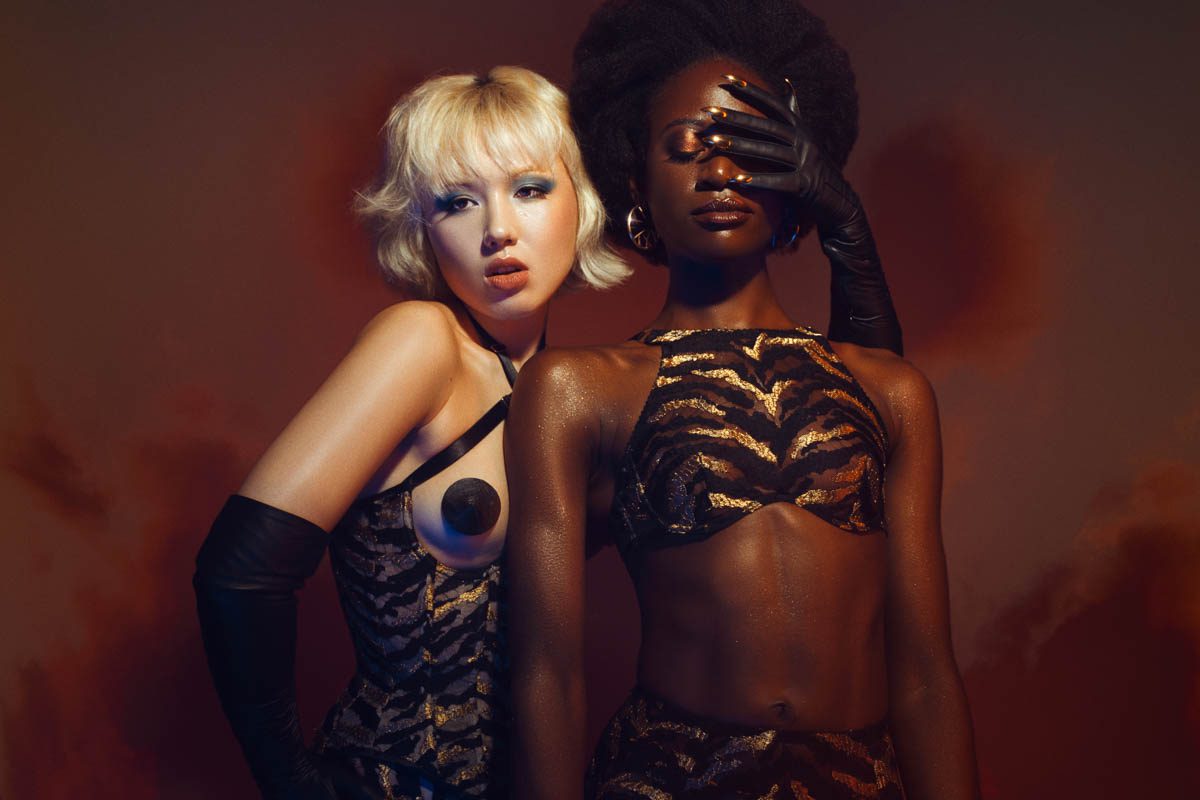
Karolina Laskowska Tara French lace corset, 20,100 NOK (~£1,713 / ~$1,916 / ~1,963€) and high neck bra, 4,000 NOK (~£341 / ~$381 / ~391€).
Image credits: Photography, Josefien Hoekstra; Models, Lian & Ama G at House Of U; Makeup, Ashley Groenewald; Assistance, Charlotte Celine.
How is lace made?
Nowadays, it’s safe to say that lace is mostly woven by machines in factories. However, before industrialisation lace was woven by specialised workers, creating the lace from threads on bobbins (Chantilly lace), with needles (Alençon lace or Venetian lace), or with French Leavers looms, among other artisanal techniques.
Making lace was traditionally a very time-consuming process that required a lot of precision, with some lace being woven at a pace of 7 hours per centimetre! It also meant that the resulting patterns were a work of art, somewhat unique in nature. Now that lace can be manufactured far quicker, and in large quantities, a lot of fashion companies have access to the exact same patterns. You can probably recognise some of them without associating them with a specific brand, as they have become ubiquitous in the lingerie industry.


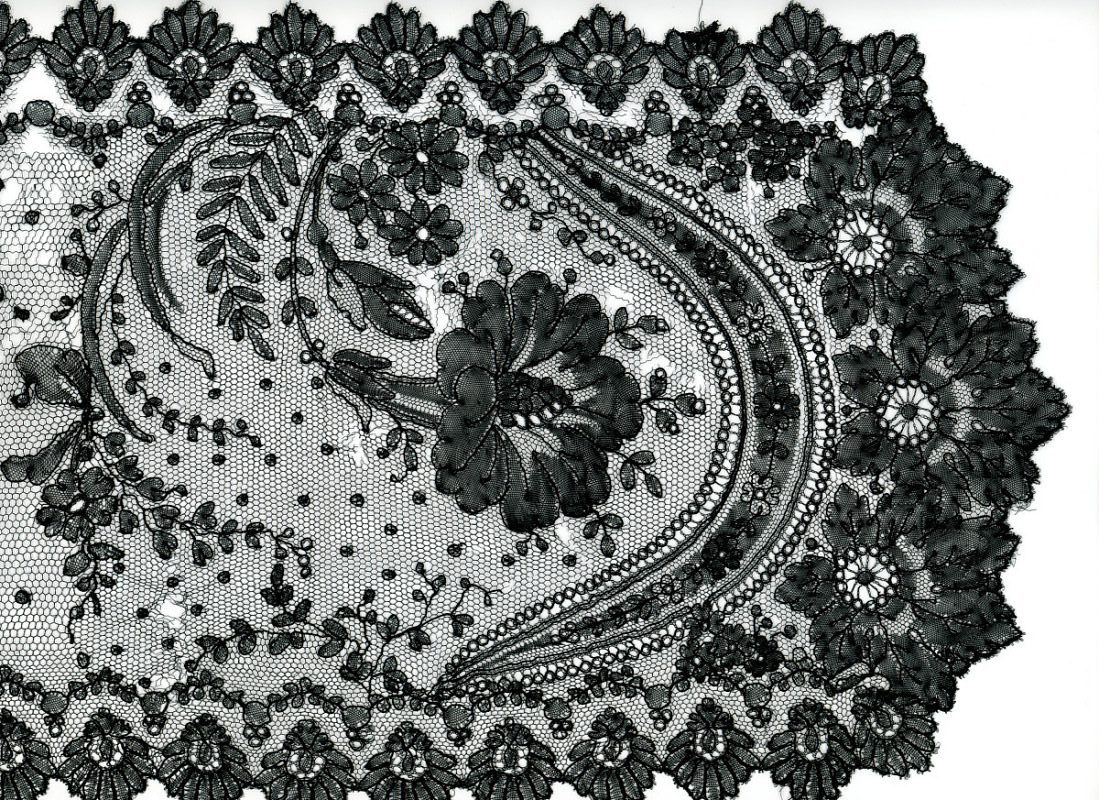

You’ll generally be able to see a difference between fine lace made through a traditional process and a modern imitation of such design, with practice. Some are more obvious than others, however. It’s important to note that lace can be of good quality even if it’s not manufactured the traditional way. And sometimes, luxuriously fine lace means it is so delicate that you might not want to use it on everyday garments.
When to wear lace lingerie
Talking about everyday garments, there is also the assumption that lace is meant for special occasions or for seduction purposes. To this statement, I wholeheartedly disagree. Some laces can easily handle everyday wear and will be light, soft, comfortable enough, and durable granted that you hand-wash them regularly. Besides, you definitely don’t have to have an audience to wear lingerie for in order to enjoy it; if you find it pretty, if it makes you feel good once you put it on, then its purpose is fulfilled!
Lace is maybe not the fabric of choice to warm you up during winter, or to hide your nipples or pubic area if you wish for modesty, but it can be worn for any occasion as long as you want to adorn your body with it. It is usually flat enough to wear under most clothes discreetly, and like a mesh, is typically breathable too thanks to the open weave.
To celebrate International Lace Day, I hope you get to wear your favourite lace lingerie set and look at it with different eyes!
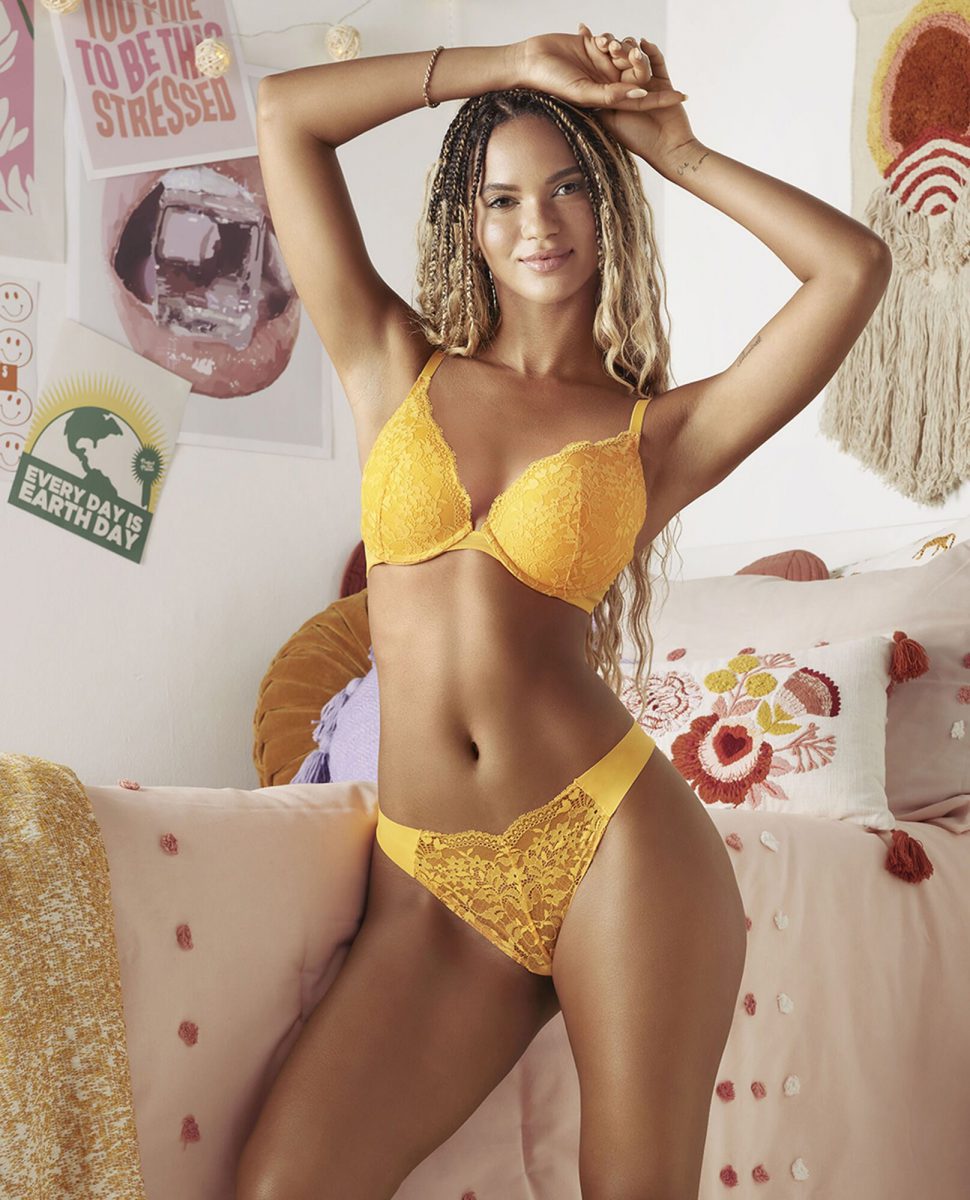
Do you like lace lingerie or do you prefer plain fabric? What is one assumption you have had about lace that prevented you from adding it to your everyday wardrobe?
